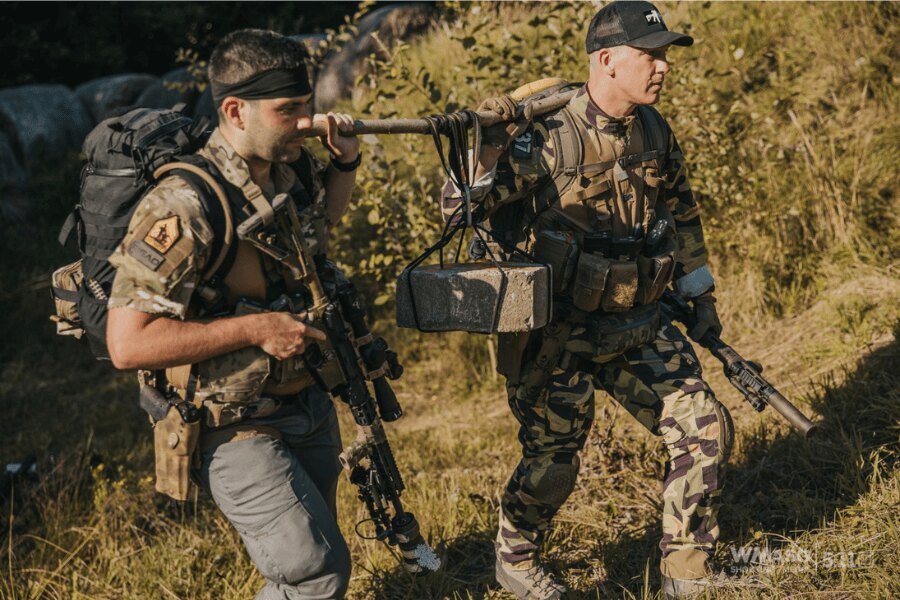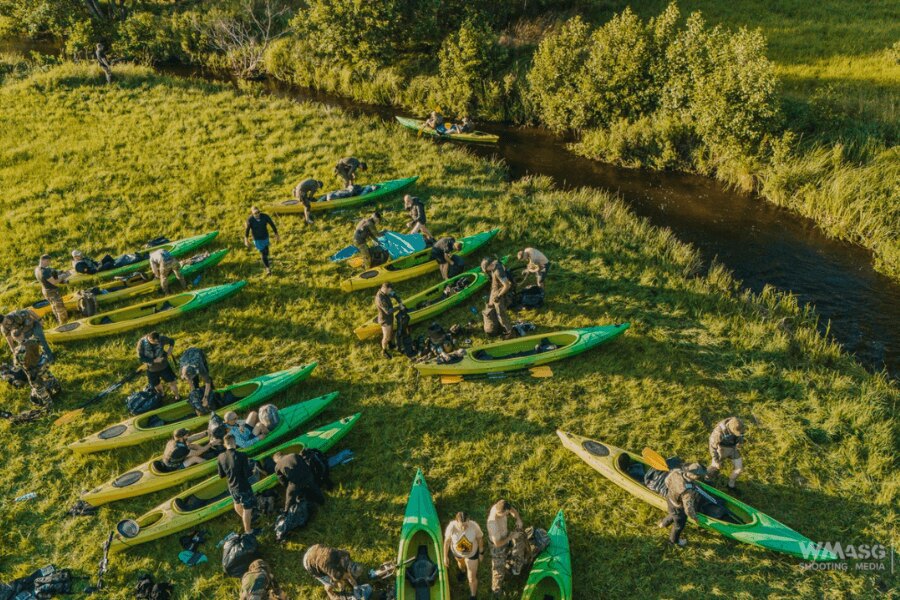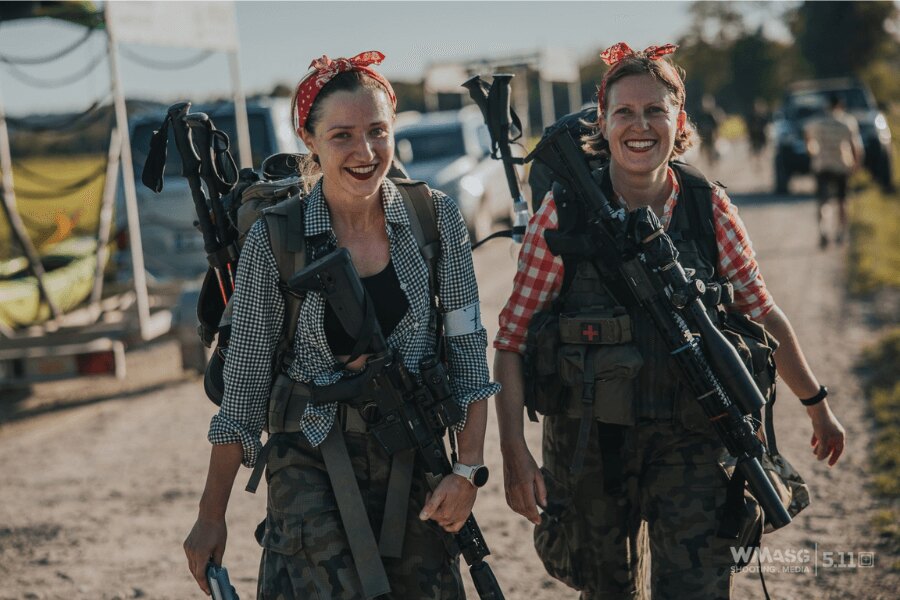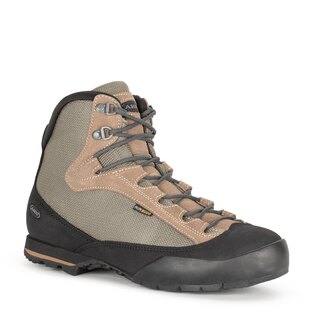Light infantry: a shooting race where you won't be led by the hand
This year's Light Infantry (Lekka piechota) defense-shooting competition is over. What makes this competition interesting? Just a few facts at the beginning: it takes place in the north of Poland and ranks among the most demanding shooting competitions of its kind. It is an uncompromising test of physical strength, mental endurance, but also time management. We will talk more in this article, which may entice some of you for next year. Of course, there was Czech representation at the event, and at the end we will interview one of the participants. You have a lot to look forward to!
A race that will get everything out of you
An all-army lesson
Don't be fooled by the word "light" in the name. This race will comprehensively examine all areas of knowledge and skills that a "tactical shooter" should master – from shooting and tactics to topo and navigation to medical, engineering or intelligence training in very creative disciplines. Add to that constant physical exertion in the full gear, work under stress and, in the main and most time-consuming category, practically zero sleep – and you immediately have a very interesting cocktail. You rarely get such an opportunity to test your skills in combat conditions.
A lesson in coordination
Since this is a pair competition, the level of cooperation in the team, communication and absolutely safe handling of the weapon in a pair under stress plays a big role here. Some shooting situations require excellent coordination of both shooters, e.g. seemingly relaxed shooting on a swing, but due to the recoil, it swings with each shot.

The shooting stage "swing" may seem relaxed and even romantic. But in reality, it is a challenging lesson in team coordination. Source: wmasg.com, Klub Strzelających Inaczej - Lekka Piechota
A lesson in self-sufficiency
Another important element is self-sufficiency. The teams carry all their equipment with them at all times and thus walk non-stop in the full gear. They put aside material only when solving shooting situations, which are time windows counting units of minutes. Any violation of this rule is punishable by immediate disqualification. The only exception is water, which competitors have the opportunity to refill continuously in the marked zone on the shooting range. And to make it all not so monotonous, sometimes there is a move with a "mortar" – a concrete prism weighing approximately 35 kg.

Lessons in improvisation. The Czech team SSK Ferus carries a "mortar" weighing approx. 35 kg over a distance of 1 km. Source: wmasg.com, Klub Strzelających Inaczej - Lekka Piechota, SSK Ferus
A lesson in time-management
Among the main attractions of this race are the time windows for shooting, which you will be allocated in advance. For each shooting stage, you have exactly 3 minutes + 2 minutes to evaluate, move and prepare for the next stage, where the shooting continues immediately. You must arrive at the site exactly at the designated time. Are you a minute late? Then you only have 2 left to shoot from 3 minutes. Are you 5 minutes late? In that case, you are out of luck, the situation does not wait. It's a genius move on the part of the organizers – not only do they add some extra stress factor to the competitors, but thanks to this, the shootings are nicely spread out and there is no danger that the teams will get stuck at some station and thus delay the course of the entire race. When else does personal time-management become such a priority?

The situation does not wait. You must arrive at the shooting range on time. Source: wmasg.com, Klub Strzelających Inaczej - Lekka Piechota
A lesson in motivation
You basically have time off between individual shooting windows. And of course it is advisable to spend actively, which requires a great deal of motivation. A large number of extra points can be obtained by searching for navigation points in an area of approximately 15 km². Therefore, some teams manage to walk tens of kilometers. Of course, it's not just like that either. In the Light category, you will have to avoid "enemies" in the form of patrols and signal traps, whose sole purpose is to deprive you of points. Movements must therefore also take place tactically and at night with a night vision device.

Part of the most demanding Light division was shooting and moving at night. Source: wmasg.com, Klub Strzelających Inaczej - Lekka Piechota
Light, Lighter, the Lightest!
The competition is divided into three divisions according to length and difficulty:
- the Lightest
- Lighter,
- Light.
The lightest category is intended mainly for those who came to try it out. It is such a tasting with minimal costs and takes 8 hours. It is the only category where it is not mandatory to wear rifle suppressors.
Then it starts to get really interesting. The mandatory carrying of rifle supressors is specific to the Light and Light divisions. You move near residential areas and do not carry weapons concealed (they must always be unloaded). And rifle suppressors are one of the main conditions for the organizers to be able to realize such an extensive event at all and at the same time to maintain good relations with the local residents, especially with regard to morning and night shootings. In addition, rifle suppressors allow relatively safe and without risk of hearing damage to shoot the stage in vehicles, houses, narrow tunnels and other closed spaces.

At the Light Infantry competition, you could have your rifle cleaned for free directly by Riflecx fellows and stock up on their products. Source: wmasg.com, Klub Strzelających Inaczej - Lekka Piechota
The lighter division basically means a step before the main one, Light. If you have decent shooting skills, you know how to grit your teeth, but you don't quite dare to try the Light yet, this category is just for you. It will take 18 hours and, compared to the Lightest category, there will be several shooting windows with different situations, tactical tasks and navigation points. Despite the higher level of difficulty, it is still an event where you go home after shooting, or perhaps for a beer.
The Light division, which is the priority of this article, is considered a royal discipline. The difference between Lighter and Light levels is noticeable. If only because Light lasts twice as long – a whole 36 hours, which includes 2 nights with practically no sleep. There are 30 shooting situations waiting for you in 6 time windows for shooting, including 3 at night and 3 in the morning. In addition, a total of 6 tactical tasks and up to 30 navigation points hidden somewhere in the terrain. But the royal discipline also has another specialty, and that is sailing on the river in a two-seater kayak to Lake Orle, 10 km away. But don't expect any relaxing paddling here either – there are obstacles lurking on the river in the form of stones, trees or a fallen bridge and you have to deal with them. Of course on time and of course with all the equipment.

Even the transfer to the kayak was with all the gear. Source: wmasg.com, Klub Strzelających Inaczej - Lekka Piechota
Excellent organization
The Light Division competition took place on the weekend of 19-21 July at the Zielnowo shooting range, 40 km west of Gdynia in northern Poland. The Lighter and Lightest Division competitions took place at the same location a week earlier. The weather was thus given the opportunity to create unique conditions for each event – while the participants of the Lighter and Lightest Division fought with rain, mud and wind that literally broke trees, the Light Division sweated in the hot summer weather.
What many people traditionally praise about this race is the perfect organization, both on the spot and from the moment of your registration, when the organizers keep you in the loop. This year, the organizers managed to increase the capacity to the maximum – 84 pairs for the Lighter and Lightest divisions and the same number for Light.
If you decide that you want to go ahead and sign up for the next year of the Light Infantry, keep an eye on the KSI website and Facebook pages and don't miss the registration start date – despite the seemingly high number of participants, this year it filled up in a few minutes.
Strong foreign participation regularly appears at the race, and Czech and Czech-Slovak teams are not far behind and appeared in almost all divisions. A total of 3 Czech teams participated in the light division this year, and the SSK Ferus team achieved an excellent 16th place. By the way, one of the teams of the Light Division was made up of women, which we acknowledge. At the competition, you could have your guns cleaned for free at the Riflecx booth, chat with them, and buy their merchandise for your inventory.
TIP: Do you know how to clean your guns perfectly with Riflecx?

The women's team also fought in the Light Infantry competition, and in style. Source: wmasg.com, Klub Strzelających Inaczej – Lekka Piechota
Klub Strzelających Inaczej (KSI)
The organizer of the Light Infantry race is Klub Strzelających Inaczej (club of those who shoot differently). It arose from the initiative of people who were looking for alternatives to the existing methods of shooting training, as well as opportunities to develop in shooting. In short, they decided to teach shooting differently than others and to give those interested a chance to practice shooting in different conditions.
INTERVIEW: Petr Homola from the SSK Ferus team
As we have already mentioned, several Czech and Czech-Slovak teams took part in the Light Infantry race, including 3 teams in the heaviest Light category. Although just finishing this competition is a great achievement and anyone who completes it can consider themselves a winner, the SSK Ferus team achieved 16th place, which is a really good result.
This team consists of Maj. Petr Homola from the 43rd Airborne Regiment Chrudim and his fellow Jimmy from the SSK Ferus shooting club. How did they prepare for the competition, what was the most difficult and what would they recommend to future participants? Read our interview…

The Czech team SSK Ferus placed 16th. Source: wmasg.com, Klub Strzelających Inaczej - Lekka Piechota, SSK Ferus
Did you take part in the Light Infantry division race for the first time?
Yes, the first time. We watched various competitions here and in Europe, and this one appealed to us with its concept of tactical shooting and other skills.
Why did you choose this particular race? What makes it interesting?
Like I said – it's comprehensive. It is not a matter of quickly shooting for time, but of thinking through the entire situation and finding the optimal solution. This also applies to non-shooting disciplines.
Was there any preparation before your participation?
Yes, on several levels. First there were documents – an invitation from the organizer and the processing of a European firearms passport. This is so that we can transport weapons. Furthermore, we read the experiences from the past and selected and supplemented the equipment, material, clothing and food accordingly. And, of course, shooting training – optimal shooting of silenced rifles and shooting at 50-150m. In addition, various variations of positions and dynamic shooting.
Was any special equipment preparation necessary?
The organizer required a functional gas mask, a suppressor, a flashlight for both a rifle and a pistol, and a whistle with a headlamp. The rest was up to you or you got it on site – like a life jacket and a kayak.
What equipment has worked for you and what has not? And do you have any equipment recommendations for those interested?
Light chestrigs and well organized medium packs, water shoes and plenty of ammo. Then the Aku Spider shoes from Rigad. They really "marched" :-) On the contrary, we underestimated the sports nutrition and minerals in the water. Then we were a bit screwed.
What was the biggest challenge for you? And what, on the other hand, went well for you?
Navigation moves. Or rather, to force ourselves for them. It would be nice to have a shot, complete an additional health or engineering discipline and rest, but if you want a good result, you have to march immediately and constantly. And there we had a crisis the second evening, also because of the Sunday trip home.
If you had the chance to do the race again, would you do anything differently?
Just small things and better management of the trip back and forth to Poland. Otherwise, we got it pretty good.
What did this experience give you?
Certainly an inspiration for SSK Ferus training sessions and races, an example of how it's done "in the world". It was definitely a great experience and we met interesting people – for example, fellows from Riflecx or international competitors.
The shooting disciplines were very creative. Will you introduce something new in the shooting club SSK Ferus, or at the training in Chrudim?
The shooters will see a little something at the Ferus Cup in September, the paratroopers in Chrudim will definitely recognize something. For me, the main inspiration was the time organization and great trust in the competitors – it was not all the time about 45 degrees :-)
What would you recommend to those who would like to participate in this competition?
Not only to train shooting, but especially the body and non-shooting disciplines. After all, the 50-70 km with complete material is no longer just about morale...
Readers are further interested












































































































































